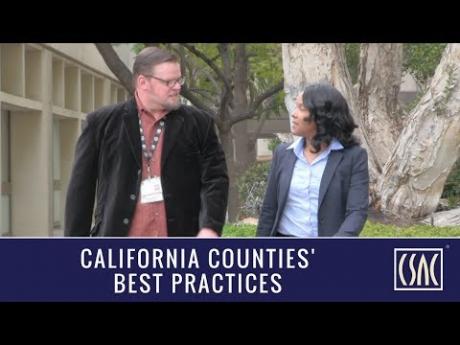Los Angeles County, Local School Districts Use Technology to Help Foster Youth
For foster children, the challenges are many, including often having to move from residence to residence – which can mean moving from school to school. This can result in school district officials not being completely aware of the foster youth in their classroom. Communication between a school district and county overseeing the foster youth can be sporadic and delayed.
Los Angeles County’s Department of Children and Family Services (DCFS) staff saw first-hand the obstacles this created and set out to find a solution that would assist both county and school district staff – but more importantly, benefit the foster youth. The result was the development of the Student Information Tracking System, which shares real-time information about foster youth between the county’s child-welfare system and area school districts.
Schools are now able to quickly identify which students are in foster care and who is responsible for them, thus increasing access to educational services. Social workers can now receive timely and accurate academic information with fewer hurdles, allowing them to document updates in case notes and court reports, as well as check the progress within the classroom and assist students accordingly.
The Los Angeles Unified School District, the largest county’s district, was the first to collaborate with the County on the project. Since then, others have followed. Now approximately 50 school districts within the County are utilizing the system, providing easy access to information on more than 15,000 foster youth. And that number keeps growing as more districts come online.
“This is a system that allows social workers to be involved in how the kids are doing educationally,” said Steven Sturm, Children Services Administrator II for DCFS. “We know where they’re at, know their progress, and see trends that are happening. It’s information we never had before. This allows us to get records for all the youth and have them at our fingertips. It’s a very wonderful tool to help the youth.“
La Shona Jenkins, coordinator with the Los Angeles Unified School District, is also quick to discuss the value of the tracking system. “Counselors are able to log into the system and determine who holds the educational rights for that student, who the social worker is, who the attorney is — and with that they can follow up with those individuals to provide the appropriate case management services.”
The tracking system really “opened the door to collaboration” between the county and school district, Sturm explained. And Jenkins agreed. “There’s been a lot of collaboration between the two agencies,” she said, “And it’s been beneficial to our students” because with more information available, both school counselors and case workers can ensure each foster youth is receiving the assistance they made need.
The system has saved significant time for both the county and school district staffs. It would take staff approximately hours to gather and process records for each foster youth attending school in Los Angeles County. Now, all it takes is logging into the Student Information Tracking System and search for the child’s records. And when all school districts join the tracking system, approximately 320,000 work hours will be saved annually.
The popularity of the system is evident in the numbers, explained Bill Wang, DCFS IT Supervisor who was the system’s lead developer. “It is logged in to by social workers thousands of times a day to check students’ school information.”
“We want to ensure the students have every opportunity to succeed, that they have the resources behind them,” Sturm said.
This Los Angeles County program is a recipient of a 2017 CSAC Challenge Award, which spotlights the most innovative programs in county government. The Call for Entries for the 2018 awards is now open.









































